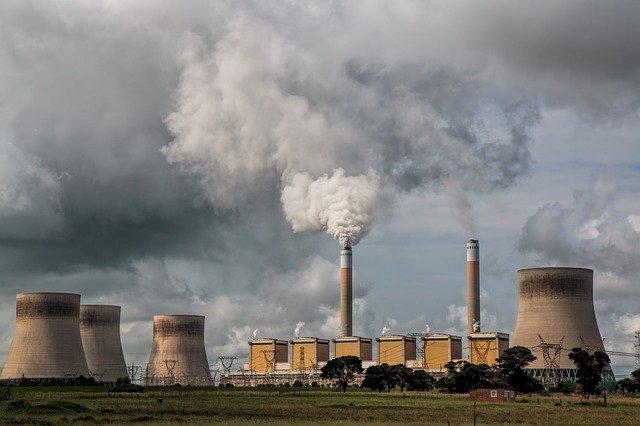New York, NY - October 6, 2017 - Attorney General Eric T. Schneiderman, leading a coalition of 14 state Attorneys General, today filed a notice of intent to sue the Trump Environmental Protection Agency (EPA) for failing to meet the Clean Air Act’s statutory deadline for designating areas of the country impacted by unhealthy levels of ground-level ozone (known as smog).
In August, Attorney General Schneiderman and a coalition of Attorneys General sued the EPA for illegally delaying the designations; the next day, the EPA reversed course and withdrew the delay. However, this week, the EPA missed the statutory deadline of October 1st for designation.
Reducing smog levels is vital to protecting millions of New Yorkers and other Americans from dangerous pollution. According to the American Lung Association, over 115 million Americans – including 6.7 million, or one in three, New Yorkers – breathe harmful levels of ozone, which often travels far distances from other states with less stringent clean air regulations. The designation of areas with unhealthy smog levels plays a key role under the Clean Air Act in addressing the pollutant’s severe harms to public health, triggering requirements for state-specific plans and deadlines to reduce pollution in the designated areas.
“Again and again, the Trump EPA has put polluters before the health of the people they serve,” said Attorney General Eric Schneiderman. “One in three New Yorkers are breathing dangerous levels of smog pollution. By ignoring critical deadlines for cutting this pollution, the Trump EPA is turning its back on the health and safety of millions of Americans. Attorneys General will continue to fight back in order to protect our residents and our states.”
Click here to read the notice of intent to sue, which was filed by the Attorneys General of New York, California, Connecticut, Illinois, Iowa, Maine, Massachusetts, Minnesota (by and through its Minnesota Pollution Control Agency), Oregon, Pennsylvania, Rhode Island, Vermont, Washington, and the District of Columbia.
In October 2015, the EPA revised the national air quality standards for smog, strengthening those standards. The Clean Air Act requires the Agency, within two years after issuance of new or revised standards, to designate areas of the county that are in “attainment” or “non-attainment” with these public health and welfare standards. In the case of the 2015 smog standards, EPA was required to issue attainment or non-attainment designations by October 1, 2017.
However, on June 28, 2017, EPA Administrator Pruitt published a notice stalling the deadline for the smog designations for all areas in the country for one year. Shortly thereafter, on August 1st, Attorney General Schneiderman and a coalition of 16 Attorneys General sued the Administrator for illegally delaying the designations. The next day, EPA abruptly reversed course and announced it was withdrawing the designations delay, although it remained equivocal on whether it would meet the October 1st deadline.
As of this week, EPA has failed to make the required designation of areas of the country impacted by unhealthy levels of smog, thus missing its statutory deadline and violating the Clean Air Act. Today’s notice of the coalition’s intention to sue over the agency’s illegal inaction fulfills the Act’s requirement that parties provide a 60-day notice prior to filing a lawsuit.
The designation of areas for national air quality standards is a key statutory obligation under the Clean Air Act – and for protecting the public’s health. For areas designated as in non-attainment for the standards, states must adopt “implementation plans” – a collection of actions that the state will undertake to reduce pollution in order to ensure standards will be met in those areas. The deadlines for submitting implementation plans – and for ensuring that air quality standards are met within designated areas – are both directly keyed to the date of EPA designations.
According to EPA, the 2015 updated smog standards will improve public health protection – particularly for at-risk groups, including children, older adults, people of all ages who have lung diseases such as asthma, and people who are active outdoors, especially outdoor workers. In fact, the Agency conservatively estimated that meeting the new smog standards would result in net annual public health benefits of up to $4.5 billion starting in 2025 (not including California), while also preventing approximately:
- 316 to 660 premature deaths;
- 230,000 asthma attacks in children;
- 160,000 missed school days;
- 28,000 missed work days;
- 630 asthma-related emergency room visits; and
- 340 cases of acute bronchitis in children.
Smog forms when nitrogen oxides, volatile organic compounds, and carbon monoxide emitted from power plants, motor vehicles, factories, refineries, and other sources react under suitable conditions. Because these reactions occur in the atmosphere, smog can form far from where its precursor gases are emitted and, once formed, smog can travel far distances. That is why, despite enacting stringent in-state controls on sources of these pollutants, many states – including New York – are not, alone, able to meet federal health-based air quality standards for smog.
This matter is being handled for the Attorney General’s Environmental Protection Bureau by Assistant Attorney General Brian M. Lusignan, Affirmative Section Chief Morgan A. Costello, and Senior Counsel Michael J. Myers. The Bureau is led by Bureau Chief Lemuel M. Srolovic and is part of the Division of Social Justice, which is led by Executive Deputy Attorney General for Social Justice Alvin Bragg.










